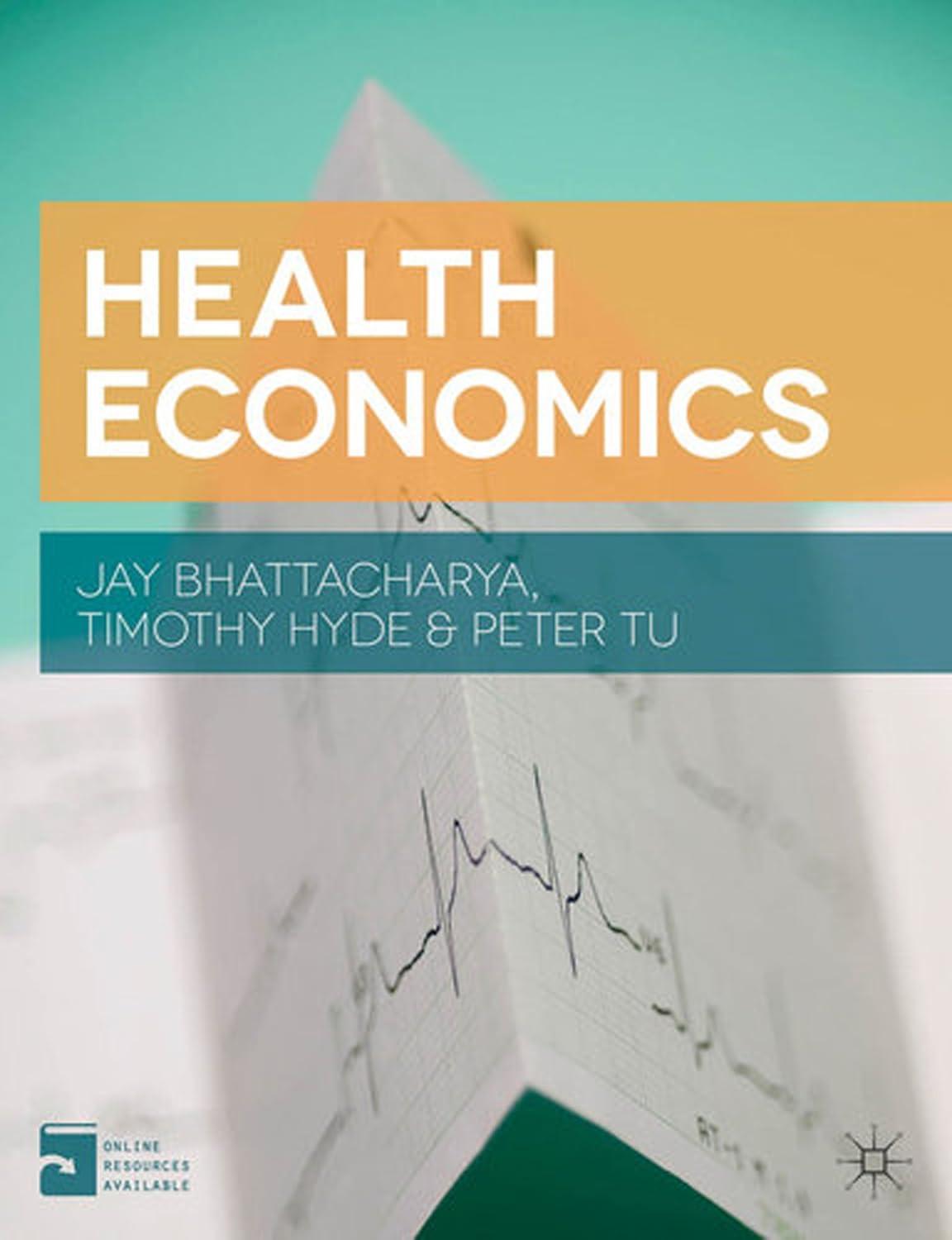Review the assumptions from the previous problem, and assume that it still costs 6 to produce
Question:
Review the assumptions from the previous problem, and assume that it still costs § 6 to produce a pack of cigarettes.
a. Draw the private supply curve and the private demand curve in this market. What is the privately efficient quantity of packs purchased per day?
b. Draw the public supply curve in this market. Explain why it differs from the private supply curve, and how this represents the externality from secondhand smoke.
Highlight the area(s) of your diagram that represents social loss, and interpret this loss in terms of cigarette smoking.
c. What is the socially efficient quantity of packs purchased per day?
d. Suppose that, due to the introduction of a hyper-effective tobacco fertilizer, the cost of producing a pack of cigarettes plummets to §1. How does this affect the level of smoking and the level of social loss? Explain.
e. Suppose the government decides to pursue a Pigouvian solution to eliminate social loss. What sort of tax or subsidy would they implement, and what is the resulting quantity of cigarette packs purchased?
f. The opposition party in the Pcorian parliament loudly opposes the proposed tax plan as government meddling. The opposition leader invokes the Coase theorem and says that the socially efficient level of smoking will occur even in the absence of government intervention. How are property rights assigned in this instance? Why might the Coase theorem not apply in this setting?
g. Assume that the Coase theorem actually does apply in this setting. The Pcorian parliament passes a new law giving anyone the right to forbid his neighbor from smoking. Who benefits, and who is harmed, by this new law? How will this affect the level of smoking?
Data from in previous problem
Consider a patient (let’s call her A) with end-stage renal disease, who has been on the waiting list for a kidney for several years. She has no family members with kidneys that are immunological matches, so she is waiting for a kidney from an organ donor. Getting a new kidney would considerably improve A’s life, so she is willing to pay a considerable sum – $x – to get a replacement kidney. Consider another patient (let’s call him B) who has just died in a motorcycle accident and who has a kidney that is an immunological match for A. When B was alive, he was an altruistic sort of person – in case of his death, he had wanted his organs to go to someone like A (though A and B never knew each other). He expressed his wishes by putting an official sticker, which cost him $0, on his driver’s license saying he was an organ donor. He was so altruistic, though, that he would have been willing to pay y for this sticker, where y < x. Consider, finally, B’s family who (all else equal) would rather bury B with all his organs intact than without them. As a group, they derive $z of utility from burying B with all of his organs intact, even after taking into account B’s preferences (where y < z < x). Assume that the law is ambiguous but that in practice B’s family gets to decide what happens to B’s body. These are the only interested parties in this story.
Step by Step Answer:






